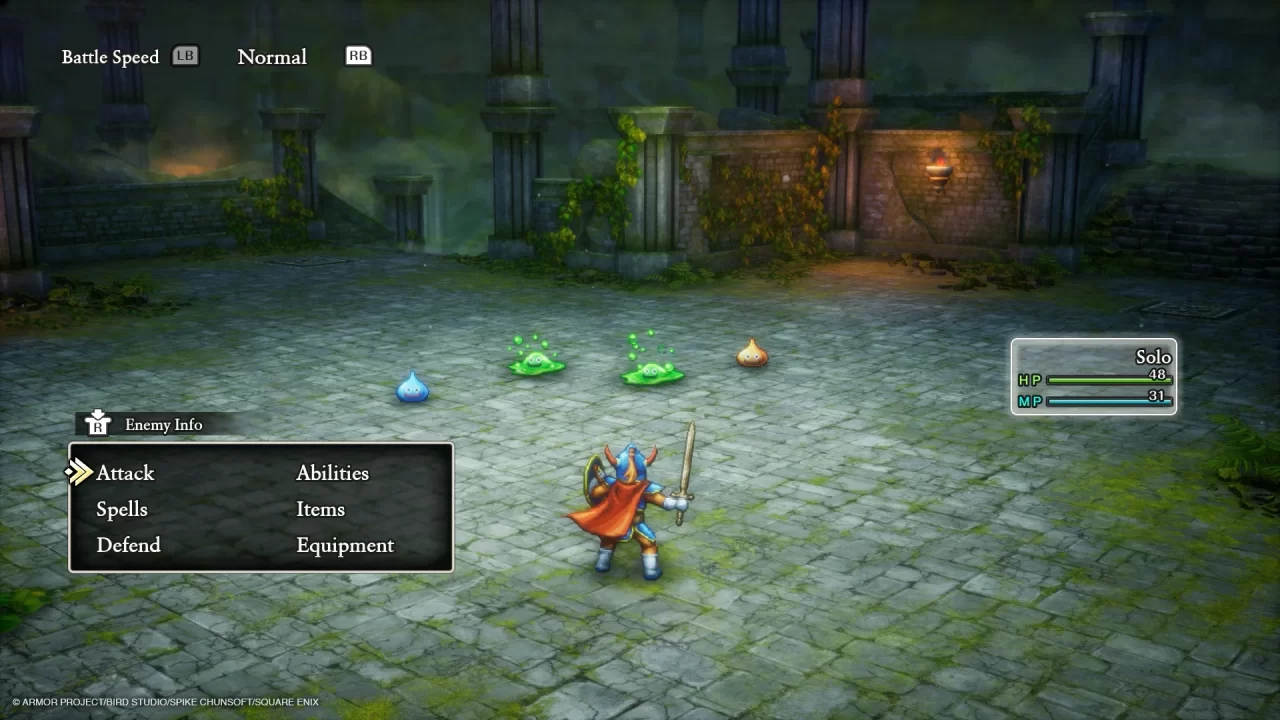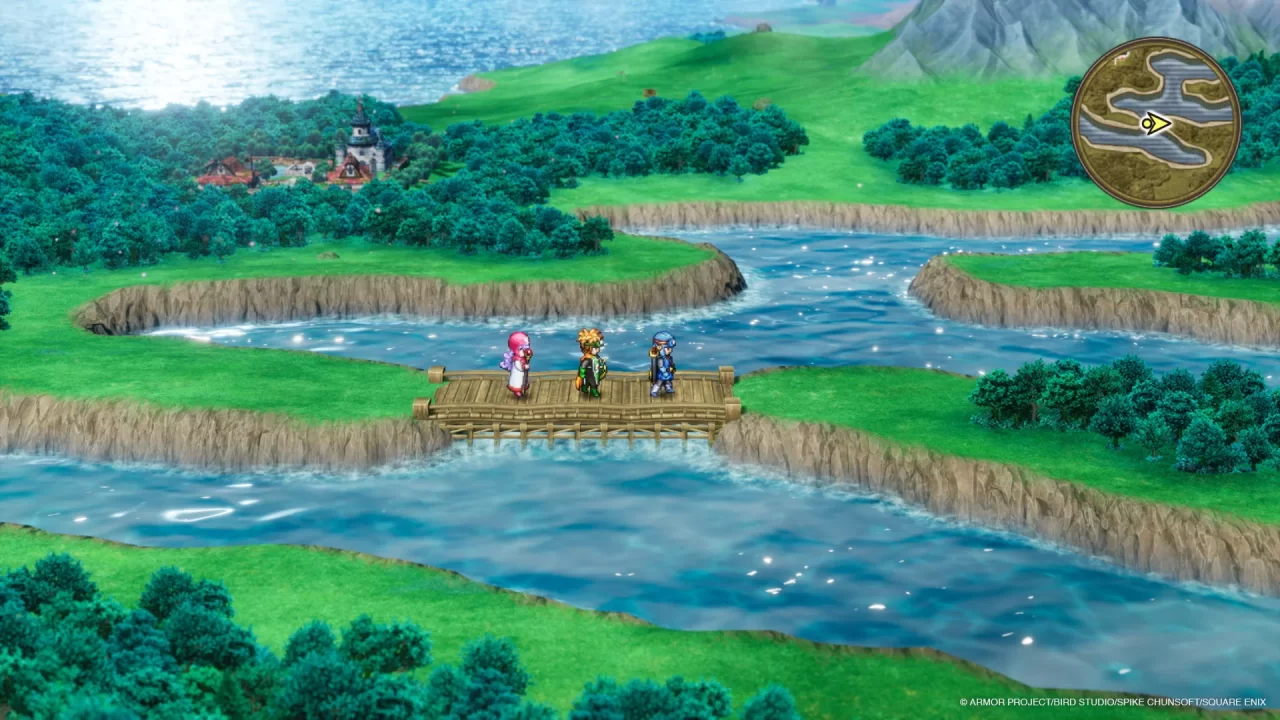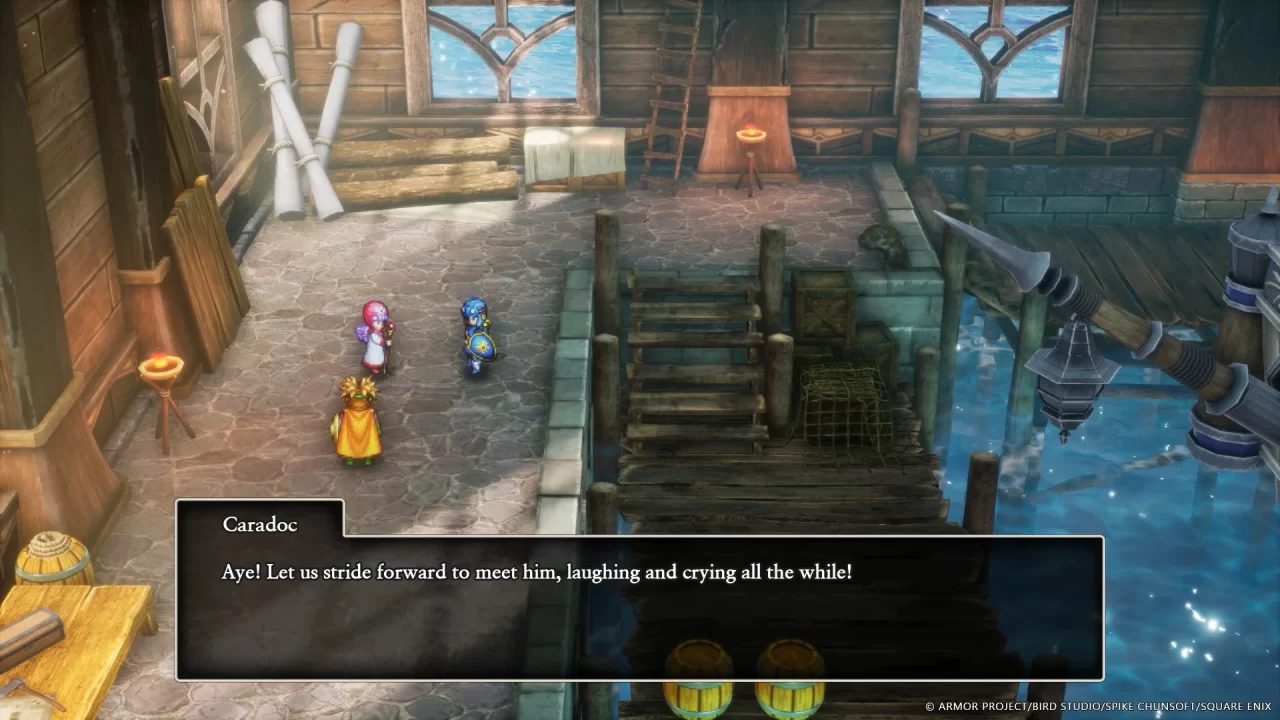“I’m going to try one more time, Bill,” my grandma says, undeterred by her bad RNG, walking into the dungeon once again and all the way to that chest that might have the Death Necklace.
As my grandpa flips back a page in his thick, well-loved Dragon Warrior GameFAQs printed walkthrough, he smiles back and says, “Remember to use the torch as you walk into the dungeon, Mom.”
Grandma looks back, huddled in her blanket. “Which way do I turn again? Zach, remember that the item you can get from this chest every once in a while is worth a lot of money.”
I glance over at my wife and give her a smirk before replying, “Oh, I remember, Grandma. Aren’t you a high enough level to just move on without it?”
I already know her answer before she gives it.
“This is always the way I do it. I need that gold. Remember when I helped you find it? Which way do I go again?”
Patient as ever, Grandpa gently points and says, “Turn right after the stairs there, Mom.”
In so many ways, it’s appropriate that this is the last time I saw my grandma. She was always fiercely intransigent: she wanted to do things and play things her way. Even with other versions of Dragon Quest I available, she wanted to play the NES version. She wanted the familiar rhythms, the familiar RNG, and the familiar instructions my grandpa so lovingly gave her. Even as she was losing her memory, even as she couldn’t wrap her head around new games, even as she could barely see the screen, this is how she held on to a fundamental piece of who she was.
Still, even with her stubborn love for how “things should be,” I am convinced my grandma would have loved last year’s Dragon Quest III HD-2D Remake, a game that is faithful in all the right ways to the original while also updating it for a modern audience.
Would she have liked Dragon Quest I & II HD-2D Remake? I’m less sure. These are ultimately very different games. They use the original iterations as a baseline, but have their own identity. This largely works with Dragon Quest II, turning it from an overly ambitious slog into something actually fun to play, but with Dragon Quest I, it’s sometimes an awkward fit, muddying something that has always been pure and simple.
Don’t get me wrong: I understand why the original Dragon Quest in particular needed some adjustments. As revolutionary and genre-defining as it was (I mean, it was the first true JRPG), it’s not a pleasant experience in 2025. Being forced to use a torch in dungeons to get around, buying keys at the shop to get into certain doors, and only fighting one enemy at a time is pretty darn boring nowadays. The horrible balancing and broad aimlessness of Dragon Quest II isn’t exactly a blast either. These games needed more changes than the already excellent Dragon Quest III, but that doesn’t mean that they all work.
Take combat, for instance. In Dragon Quest I HD-2D, you still only control one character (something the NPCs comment on a lot, a fun little jab at the original), but he’s an absolute beast, replete with dozens of skills, some of which you find from exploring and grabbing “Scrolls,” far more than you had in previous versions. You can even superpower those moves by gathering the five Sigils that originally only appeared in Dragon Quest II. These Sigils might allow your moves to “crit” randomly, or you can choose to power them up if you’re at low HP. There are also multiple enemies in random encounters, and a lot more boss fights. Put simply, there’s just a lot more going on.
That all sounds more fun than the original, right? Early on, I agreed; it’s certainly more interesting to have multiple enemies in battles. But eventually, especially in the late game, fights turn into an RNG-fest. Far too many battles are determined by one thing going wrong, and with just one party member, there’s no way to recover from bad luck. I spent at least two hours on a boss fight, and I didn’t go grind because I knew if my Midheal recovery spell critted at the right time, I’d be perfectly fine. And lo and behold, when the turns came out right, when a couple of abilities randomly powered up at the right time, I breezed through. No amount of Dragon Quest knowledge or tinkering saved me, and frankly, I don’t think it could have. I don’t even want to imagine the profanity that would have poured out of my grandma if she had to deal with some of these boss fights.
Most of those adjustments carry through to Dragon Quest II 2D-HD, but here they work. The Sigils still give you random buffs, and everyone, including enemies, has a lot more skills to work with than before. The difference, of course, is that this time you have four party members (with the delightful addition of the Princess of Cannock). Oh, and a huge change from the original DQII is that the whole party is actually useful. So, if something went wrong and killed one party member, instead of an inevitable wipe and retry, I managed with the other three. It plays fair because it knows how to play with all the tools in your box—the new Dragon Quest I doesn’t.
That goes for the story, too, which is greatly expanded in both games. The base narrative is still the same in each: you play as the descendant(s) of the legendary hero Erdrick, and you need to tackle the great evil that threatens the world. Both games’ NPCs get more dialogue, villains get a back story and understandable “motivations,” and there are a lot more things you need to do. The party members in Dragon Quest II each have distinct and vibrant personalities. Understandably, this makes both games significantly more linear, as many once optional tasks are required (yes, you have to save Princess Gwaelin in Dragon Quest I this time, but what monster would skip that?).
But does Dragon Quest I really need all that? Sure, the additional dialogue and characterization is nice, especially for the aforementioned Princess, and I always enjoy reading more of the delightful localization, but what was once a quick, simple, clean 6 or 7 hour game now takes twice as long. A lot of the additional content feels like padding that is either meant to call back to the chronologically prior Dragon Quest III or set something up in Dragon Quest II. Dragon Quest I has always been a smaller game that doesn’t need railroading, and the additional pointers, roadblocks, and content detract from the simple magic of discovery.
For Dragon Quest II, however, this all makes sense and almost entirely works for me. It is a game that thirsts for complexity, a game that swung big back in 1987, and if you ask most people (me included), it whiffed. It wanted to give you the freedom to explore with your boat but didn’t give you enough direction. It wanted to be more story-driven, but it didn’t have the space on the cartridge to tell a compelling one. It wanted to add complexity to combat, but it only made one party member worth anything. They finally achieve all of their ambitions here, with just enough direction to go along with the exploration, a fully fleshed-out story with charming characters, and a combat system that is strategic and balanced without any major difficulty spikes (if you’ve played the original, you know what I’m talking about). It might take over 40 hours to complete now, but the additional time feels organic and essential. Put simply, Dragon Quest II is the crown jewel of the two games here, and finally worth playing as more than just a history lesson.
That isn’t to say that every addition to Dragon Quest II is successful, but my complaints are mostly minor. The added underwater exploration is slow and awkward—and if you want to find all of the secrets this game has to offer, you’re going to be spending a lot of time down there. This issue is compounded by the number of important items randomly strewn throughout the different areas, or chests tucked into the very end of a dungeon that you can’t open until much later with a key. Even now, I still haven’t found a few items, and trust me, I have looked, but eventually I got tired of walking back and forth and hitting “X” until I located them. And don’t even get me started on the new dungeon required for the “true” ending—it’s an hours-and-hours-long exercise in tedium and despair, though the effort is absolutely worth it for long-time series fans.
I know I haven’t addressed this up to this point, but to be clear, both of these games still look and feel a lot like Dragon Quest III HD-2D Remake. Battles are still random and from a first-person perspective. The graphical style is entirely intact and, on occasion, improved, with even more verticality in the towns and dungeons in particular. There are secret spots and glittering item spots littered over the world map. The music still pulls from the Sugiyama-conducted “Symphonic Suites,” and while I prefer Dragon Quest III‘s OST to either of these, the Tokyo Metropolitan Symphony still does an amazing job of bringing the original classics to life in a way that fits the style and flavor of the remakes.
All of those quality-of-life features of Dragon Quest III HD-2D are back, too, including quest markers, difficulty settings, and the ability to speed up battles. They’ve even added a few more that I happily imbibed in, including marking treasure chests and secret spots on the map. As always, you can turn off these features if you want a more pure experience, but especially in the still open-ended Dragon Quest II, I am delighted they are here, no matter what my grandma might have thought of them.
Part of me wonders if I’m a little like my grandma while playing Dragon Quest I & II HD-2D Remake. Maybe I’m too attached to what I love to want things to change. Maybe the only reason I love the changes to Dragon Quest II is because I never loved it to begin with. Maybe I only want Dragon Quest I to stay the same because it’s the last game I ever saw her play. Maybe I want the developers to cherish that moment, that simplicity, the same way I do. Maybe it’s just because I miss her.
You know what? My grandma was right. Some things don’t need to change. But I can always go back and recreate that moment any time I want with the original. Maybe this new version of Dragon Quest I isn’t for me, but the new Dragon Quest II sure is, and it’s glorious.





